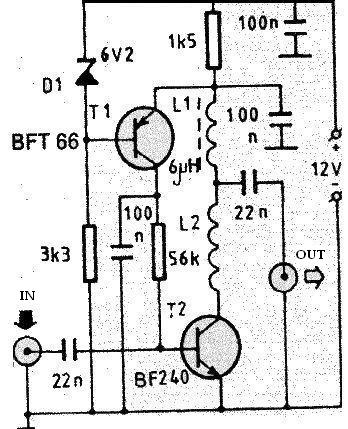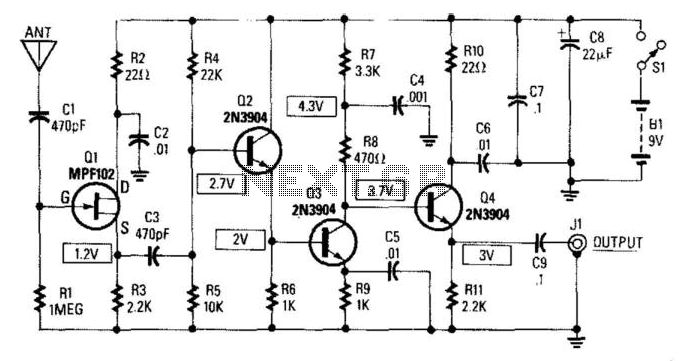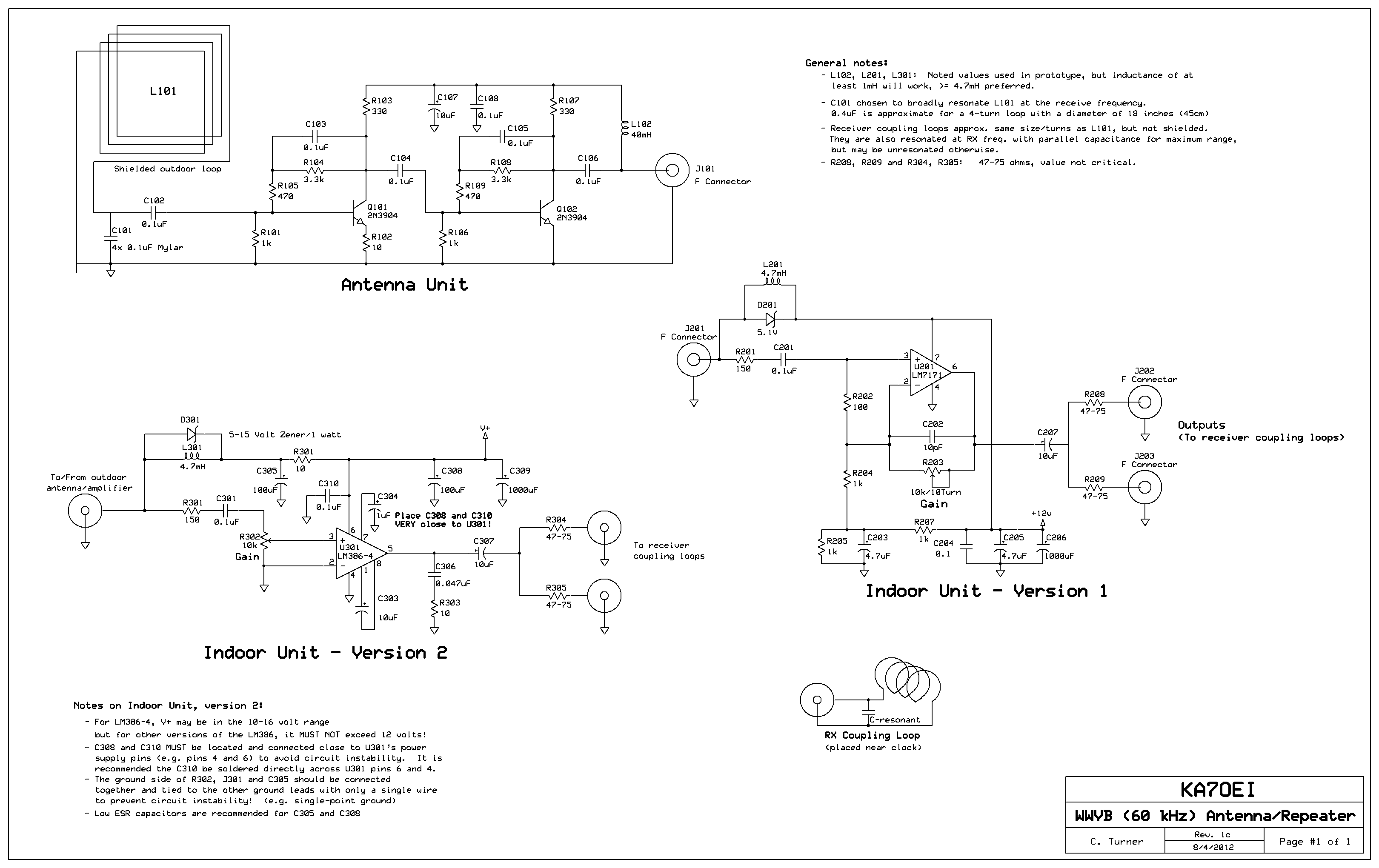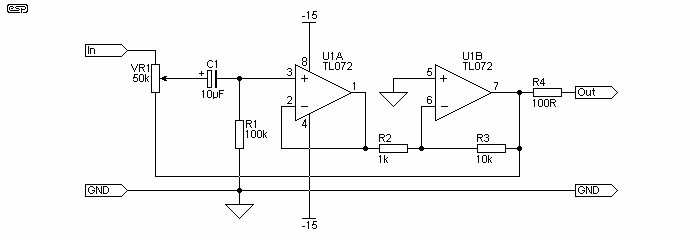
antenna tuner for better DX
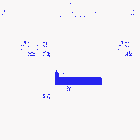
Almost any receiver covering 540 kHz to 1600 kHz is suitable for broadcast band DXing, and there are a lot of them. But the antenna is another matter. If you are new to the hobby, or if you have been having trouble DXing those really difficult stations, you may find the answer to your reception problems in a properly constructed long-wire antenna - and the "Pi-section Coupler". More: A long-wire antenna receives best from the directions perpendicular to its sides. Erect the antenna N-S to receive E-W. It should be at least 30' long and made of multi-strand copper antenna wire supported a minimum of 15 feet off the ground. A long-
A long-wire antenna is an effective solution for enhancing reception in the medium-wave (MW) broadcast band, particularly for DXing (long-distance reception). The design of a long-wire antenna typically involves a single wire element that is significantly longer than the wavelength of the frequencies being received. In this case, for frequencies ranging from 540 kHz to 1600 kHz, the wavelength varies from approximately 555 meters to 187.5 meters. A 30-foot long wire is suitable for receiving signals in this range, although it may not be optimal for every frequency within the band.
To achieve the best reception, the long-wire antenna should be oriented north-south (N-S) to maximize its sensitivity to east-west (E-W) signals. This orientation allows the antenna to effectively capture signals that arrive perpendicularly to its length, which is crucial for receiving distant stations that may be weak or obscured by local interference.
The construction of the antenna should utilize multi-strand copper wire, known for its excellent conductivity and flexibility. The wire should be elevated at least 15 feet above the ground to minimize ground losses and reduce interference from nearby structures or natural obstacles. The height of the antenna also plays a significant role in its performance, as it allows for a clearer line of sight to the horizon, enhancing the ability to receive distant signals.
In conjunction with the long-wire antenna, a "Pi-section Coupler" can be employed to improve impedance matching between the antenna and the receiver. This coupler consists of two capacitors and an inductor arranged in a specific configuration that forms a resonant circuit, thereby maximizing power transfer and minimizing signal loss. The use of a Pi-section Coupler can be particularly beneficial in ensuring that the receiver can effectively utilize the signals picked up by the long-wire antenna, thus improving overall reception quality for DXing activities.
Overall, the combination of a well-constructed long-wire antenna and a properly designed matching network such as the Pi-section Coupler can significantly enhance the performance of a receiver operating in the broadcast band, enabling enthusiasts to successfully capture distant stations and enjoy the hobby of DXing.Almost any receiver covering 540 kHz to 1600 kHz is suitable for broadcast band DX`ing, and there are a lot of them. But the antenna is another matter. If you are new to the hobby, or if you have been having trouble DX`ing those really difficult stations, you may find the answer to your reception problems in a properly constructed long-wire antenna - and the "Pi-section Coupler".
A long-wire antenna receives best from the directions perpendicular to its sides. Erect the antenna N-S to receive E-W. It should be at least 30` long and made of multi-strand copper antenna wire supported a minimum of 15 feet off the ground. A long- 🔗 External reference
A long-wire antenna is an effective solution for enhancing reception in the medium-wave (MW) broadcast band, particularly for DXing (long-distance reception). The design of a long-wire antenna typically involves a single wire element that is significantly longer than the wavelength of the frequencies being received. In this case, for frequencies ranging from 540 kHz to 1600 kHz, the wavelength varies from approximately 555 meters to 187.5 meters. A 30-foot long wire is suitable for receiving signals in this range, although it may not be optimal for every frequency within the band.
To achieve the best reception, the long-wire antenna should be oriented north-south (N-S) to maximize its sensitivity to east-west (E-W) signals. This orientation allows the antenna to effectively capture signals that arrive perpendicularly to its length, which is crucial for receiving distant stations that may be weak or obscured by local interference.
The construction of the antenna should utilize multi-strand copper wire, known for its excellent conductivity and flexibility. The wire should be elevated at least 15 feet above the ground to minimize ground losses and reduce interference from nearby structures or natural obstacles. The height of the antenna also plays a significant role in its performance, as it allows for a clearer line of sight to the horizon, enhancing the ability to receive distant signals.
In conjunction with the long-wire antenna, a "Pi-section Coupler" can be employed to improve impedance matching between the antenna and the receiver. This coupler consists of two capacitors and an inductor arranged in a specific configuration that forms a resonant circuit, thereby maximizing power transfer and minimizing signal loss. The use of a Pi-section Coupler can be particularly beneficial in ensuring that the receiver can effectively utilize the signals picked up by the long-wire antenna, thus improving overall reception quality for DXing activities.
Overall, the combination of a well-constructed long-wire antenna and a properly designed matching network such as the Pi-section Coupler can significantly enhance the performance of a receiver operating in the broadcast band, enabling enthusiasts to successfully capture distant stations and enjoy the hobby of DXing.Almost any receiver covering 540 kHz to 1600 kHz is suitable for broadcast band DX`ing, and there are a lot of them. But the antenna is another matter. If you are new to the hobby, or if you have been having trouble DX`ing those really difficult stations, you may find the answer to your reception problems in a properly constructed long-wire antenna - and the "Pi-section Coupler".
A long-wire antenna receives best from the directions perpendicular to its sides. Erect the antenna N-S to receive E-W. It should be at least 30` long and made of multi-strand copper antenna wire supported a minimum of 15 feet off the ground. A long- 🔗 External reference


